 uncle anthonys hokkien recipes Published by Epigram Books www.epigrambooks.sg Copyright2015 Loo, Anthony. All rights reserved. No part of this publication may be reproduced without prior consent from the publisher. Image credits: 2008-2014, Charles Haynes Printed in Singapore. National Library Board Singapore Cataloguing in Publication Data Loo, Anthony, author Uncle Anthonys Hokkien recipes / Anthony Loo. pages cm ISBN : 978-981-07-9798-0 (paperback) ISBN : 978-981-4615-00-6 (ebook) 1. pages cm ISBN : 978-981-07-9798-0 (paperback) ISBN : 978-981-4615-00-6 (ebook) 1.
uncle anthonys hokkien recipes Published by Epigram Books www.epigrambooks.sg Copyright2015 Loo, Anthony. All rights reserved. No part of this publication may be reproduced without prior consent from the publisher. Image credits: 2008-2014, Charles Haynes Printed in Singapore. National Library Board Singapore Cataloguing in Publication Data Loo, Anthony, author Uncle Anthonys Hokkien recipes / Anthony Loo. pages cm ISBN : 978-981-07-9798-0 (paperback) ISBN : 978-981-4615-00-6 (ebook) 1. pages cm ISBN : 978-981-07-9798-0 (paperback) ISBN : 978-981-4615-00-6 (ebook) 1.
Cooking, Chinese Fujian style. 2. Cooking, Asian. I. Title. TX724.5.CS 641.5951 -- dc23 OCN896325367 First Edition 
Soul Food

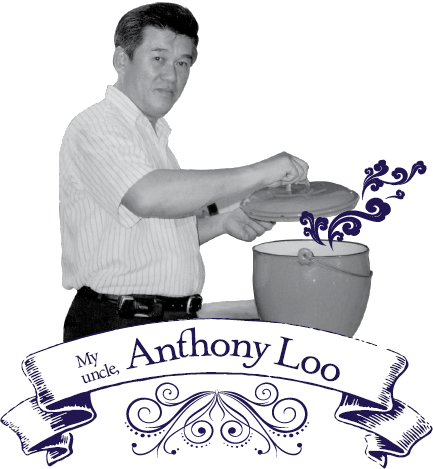
Cooking, as many have said, is more an art than a science.
My uncle adjusts as he cooks, adapting to the evolution of the dish. ALL HAPPY FAMILIES are alike, so the saying goes. What Tolstoy did not account for was the unique and intricate repertoire of dishes that made the Loo family very happy, growing up in mid-20th century Singapore. The second eldest among five siblings, my uncle Anthony Loo took the lead in the kitchen, picking up tips and tricks from his ever-cooking grandparents and parents, and taking pains to recreate meals enjoyed outside back at home. His love for cooking trailed him into adulthood, when he set up a hawker stall in Bedok. Unfortunately, an accident prevented him from continuing with such a physically demanding job, and he has since left the industry.
That does not mean my uncle has left the kitchen. Each Chinese New Year, everyone in the family invariably looks forward to gathering at his house for the reunion dinner. We are treated to a delicious array of Hokkien classics: savoury and umami-rich pork leg jelly, braised pork knuckle in dark soy sauce, peppery pig stomach soup and steamed fish with fermented soya bean. The dishes are accompanied by bowls of steaming fragrant white rice and a huge dose of familial goodwill. Dessert is usually a bowl of cheng tng (dried longan soup) or red bean soup, after which everyone sits back in a state of high satisfaction. Since I was a little girl, I have been amazed by the seeming nonchalance and ease with which my uncle single-handedly prepares these feasts.
That, to me, is the sign of a great cooka quiet modesty lacking in todays world of celebrity chefs and rock star egos. I guess his attitude stems both from a genuine love of preparing food for those he loves, and a tradition of cooking daily that stretches back to his grandparents upbringing in Xiamen in Fujian, China. They moved to Singapore in the 1920s to start up a trading business. My uncles grandmotherhis greatest influence and teacherused to whip up dishes for her large, extended family every night. She would cook simple yet hearty dishes that carried a taste of home, such as ginger chicken, soups, stir-fried vegetables and fried omelettes. As the business expanded over the years, my uncles father (my grandfather) had to spend time working in Malaysia.
Half the family would be there helping out; the other half remaining in Singapore. So when the whole family got together, it was a big deal, cause for celebration. Intoxicating aromas would waft from the open doorway of their zinc-roofed terrace in Lorong Gambir, attracting curious, appreciative neighbours. My great-grandparents and grandparents would pull out all the stops, preparing steaming pots of bak kut teh, fried tang hoon, steamed pomfret, popiah, and more. Other occasions called for specific dishes: steamed chicken and fried noodles for death anniversaries; chu bee png (glutinous rice) for one-month-old babies. My uncle is essentially a self-taught cook.
He had no formal training. Pottering around the kitchen around his elders, he absorbed the essentials of Hokkien cuisine as readily as a piece of tau pok soaks up its stew. Common Hokkien techniques such as braising, stewing, steaming and boiling became second nature to him. Whenever he had a moment, hed experiment in the kitchen, doggedly trying to recreate dishes eaten at popular Hokkien restaurants. My motherhis younger sisterwho loves cooking as much as him, was never far behind. (In fact, she has contributed invaluable tips and edits to the recipes here.) What resulted was a repertoire at once representative of the Fujianese diaspora in Singapore, as well as the idiosyncrasies of one proudly gluttonous family.
Many of the recipes in this book are true Hokkien classicsbak kut teh, popiah, glutinous rice dumplings and braised pork buns. But there are also recipes that bear the unique stamp of the Loo family, such as Grandmas steamed chicken in soya sauce and fried yellow noodles. The idea of cooking from a recipe would have shocked my grandparents and great-grandparents. To them, it was a daily necessity, as natural and thoughtless as breathing. Though these recipes specify discrete measurements, I urge you to cook with freedom and autonomy. My uncle adds a dash of this, a pinch of that.
He adjusts as he cooks, adapting to the evolution of the dish. Cooking, as many have said, is more an art than a science, and I concur. Feel free to treat the measurements and instructions in this book more as suggestionsIm sure my uncle would be just as happy if you came up with your unique version of Grandmas steamed chicken. Finally, these dishes should be enjoyed around a large table with family and friends. Each recipe can serve two to four people; depending on how many other dishes it is served with. My uncle is a reticent man; asking him to share stories about his life and work is never an easy task.
Instead, Ill allow his heirloom recipes do the talking: they are an indelible part of him, his family, and his heritage. I hope that this little cookbook will act as a time capsule of sorts, preserving authentic Hokkien cuisineand the simple joys of eating and talking around the tablefor generations to come. Samantha Lee
contents
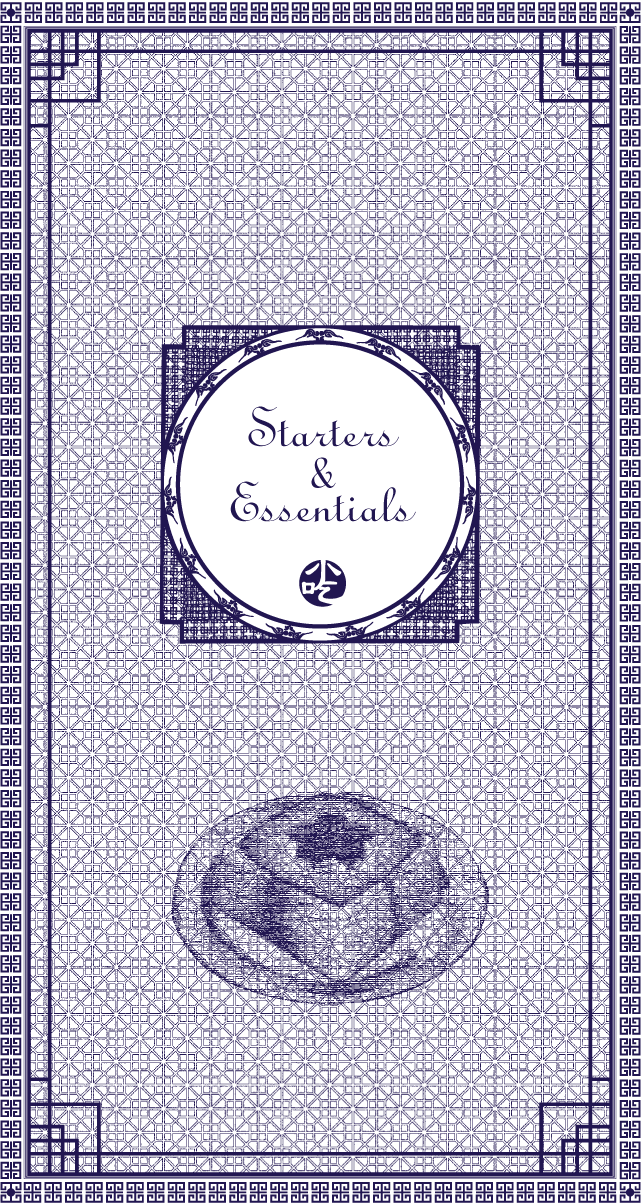
BASIC CHICKEN STOCK
1.5 water whole chicken carcasses heads garlic g ikan bilis (dried anchovies) Bring all the ingredients to boil in a large pot. Reduce heat and simmer for 1 hour. Strain and discard all the solids.
TipThe stock may be frozen and stored for up to a month.If you are strapped for time, you may purchase ready-made chicken stock from the supermarket. TipThe stock may be frozen and stored for up to a month.If you are strapped for time, you may purchase ready-made chicken stock from the supermarket.
Note that those are saltier then the recipe here, so be prudent when adding salt to taste.
BASIC PORK STOCK 
1.5 water kg pork bones heads garlic g tung chye (preserved cabbage) Boil all the ingredients in a large pot for 30 minutes. Strain and discard the solids. Store the stock in the fridge.
Next page
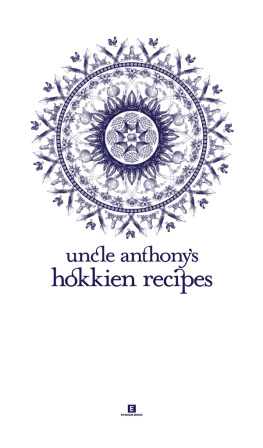
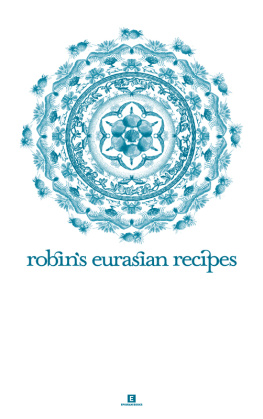
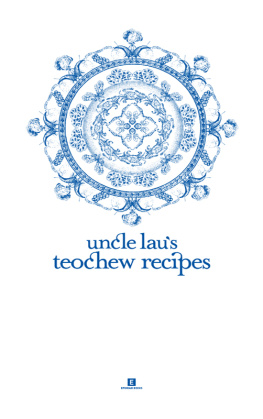
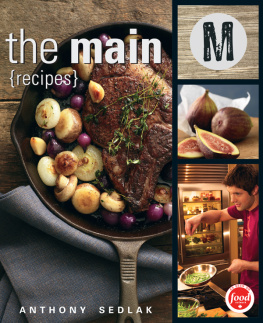
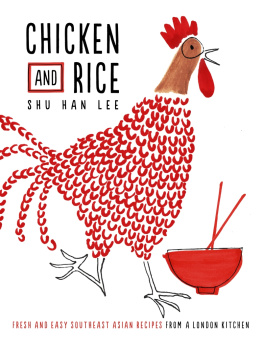
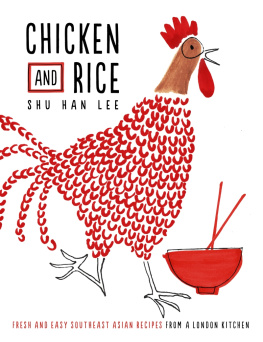
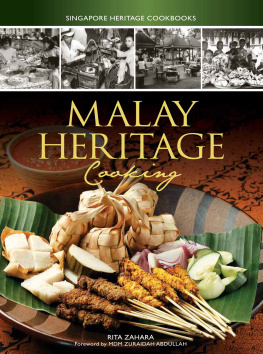

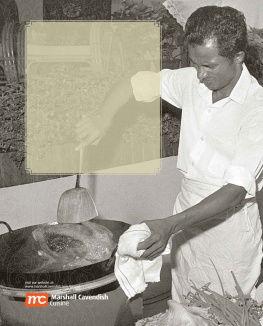
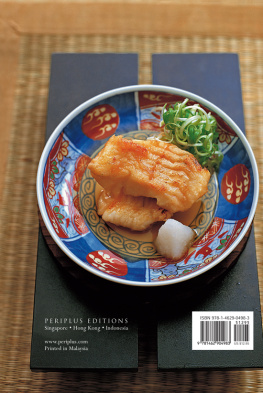
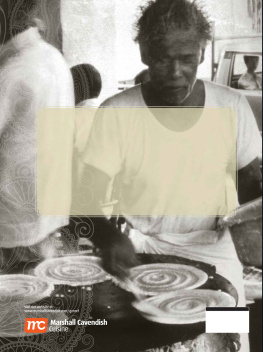
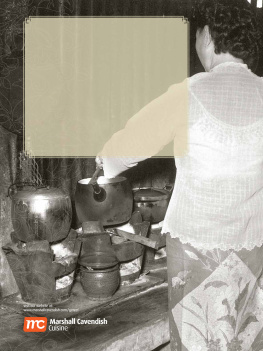

 uncle anthonys hokkien recipes Published by Epigram Books www.epigrambooks.sg Copyright2015 Loo, Anthony. All rights reserved. No part of this publication may be reproduced without prior consent from the publisher. Image credits: 2008-2014, Charles Haynes Printed in Singapore. National Library Board Singapore Cataloguing in Publication Data Loo, Anthony, author Uncle Anthonys Hokkien recipes / Anthony Loo. pages cm ISBN : 978-981-07-9798-0 (paperback) ISBN : 978-981-4615-00-6 (ebook) 1. pages cm ISBN : 978-981-07-9798-0 (paperback) ISBN : 978-981-4615-00-6 (ebook) 1.
uncle anthonys hokkien recipes Published by Epigram Books www.epigrambooks.sg Copyright2015 Loo, Anthony. All rights reserved. No part of this publication may be reproduced without prior consent from the publisher. Image credits: 2008-2014, Charles Haynes Printed in Singapore. National Library Board Singapore Cataloguing in Publication Data Loo, Anthony, author Uncle Anthonys Hokkien recipes / Anthony Loo. pages cm ISBN : 978-981-07-9798-0 (paperback) ISBN : 978-981-4615-00-6 (ebook) 1. pages cm ISBN : 978-981-07-9798-0 (paperback) ISBN : 978-981-4615-00-6 (ebook) 1.

 Cooking, as many have said, is more an art than a science.
Cooking, as many have said, is more an art than a science. 
